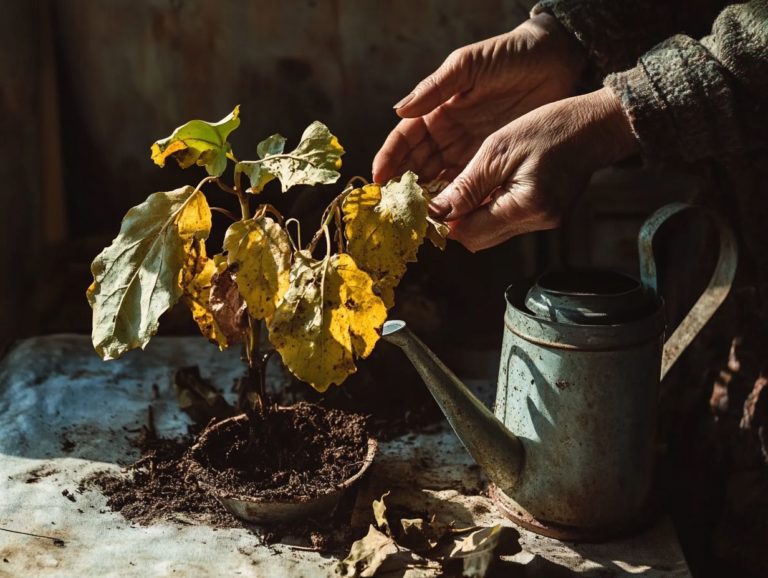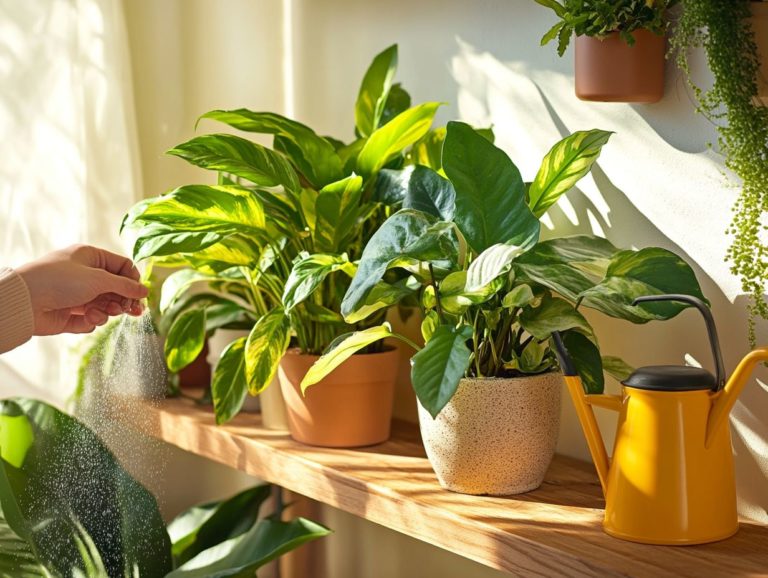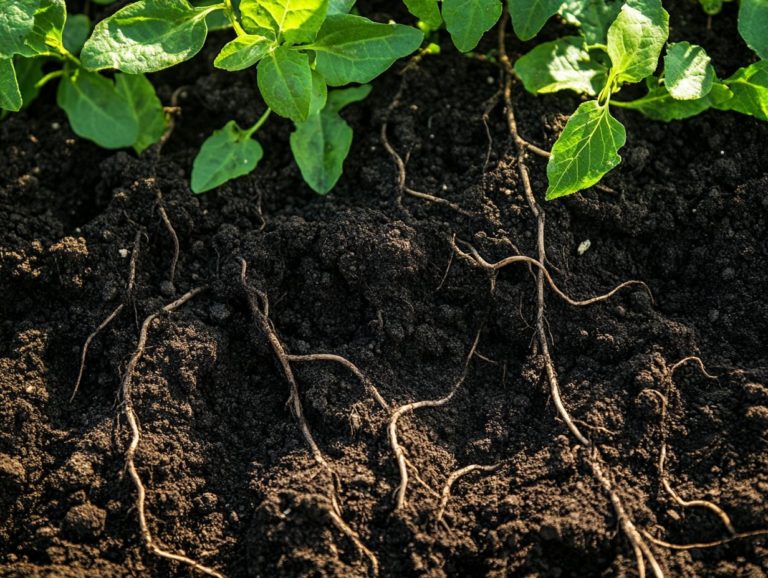How to Combat Spider Mites on Houseplants
Spider mites can truly wreak havoc on your cherished houseplants. They often go unnoticed until they ve already caused considerable damage.
Grasping the nature of these tiny pests, recognizing their unmistakable signs, and mastering prevention and treatment are essential for any dedicated plant enthusiast.
This guide delves into the world of spider mites, offering insights on identification, prevention strategies, effective treatments, and aftercare. Arm yourself with the knowledge needed to safeguard your beloved greenery and ensure they flourish in an environment free from these pesky invaders.
Contents
- Key Takeaways:
- Understanding Spider Mites
- Identifying Spider Mite Infestations
- Preventing Spider Mite Infestations
- Treating Spider Mite Infestations
- Precautions and Safety Measures
- Aftercare for Houseplants
- Frequently Asked Questions
- What are spider mites and why are they harmful to houseplants?
- How can I identify if my houseplants have spider mites?
- What are some natural ways to combat spider mites?
- Should I isolate infested plants?
- Can I prevent spider mites before they infest my plants?
- Are there chemical treatments for spider mites?
Key Takeaways:
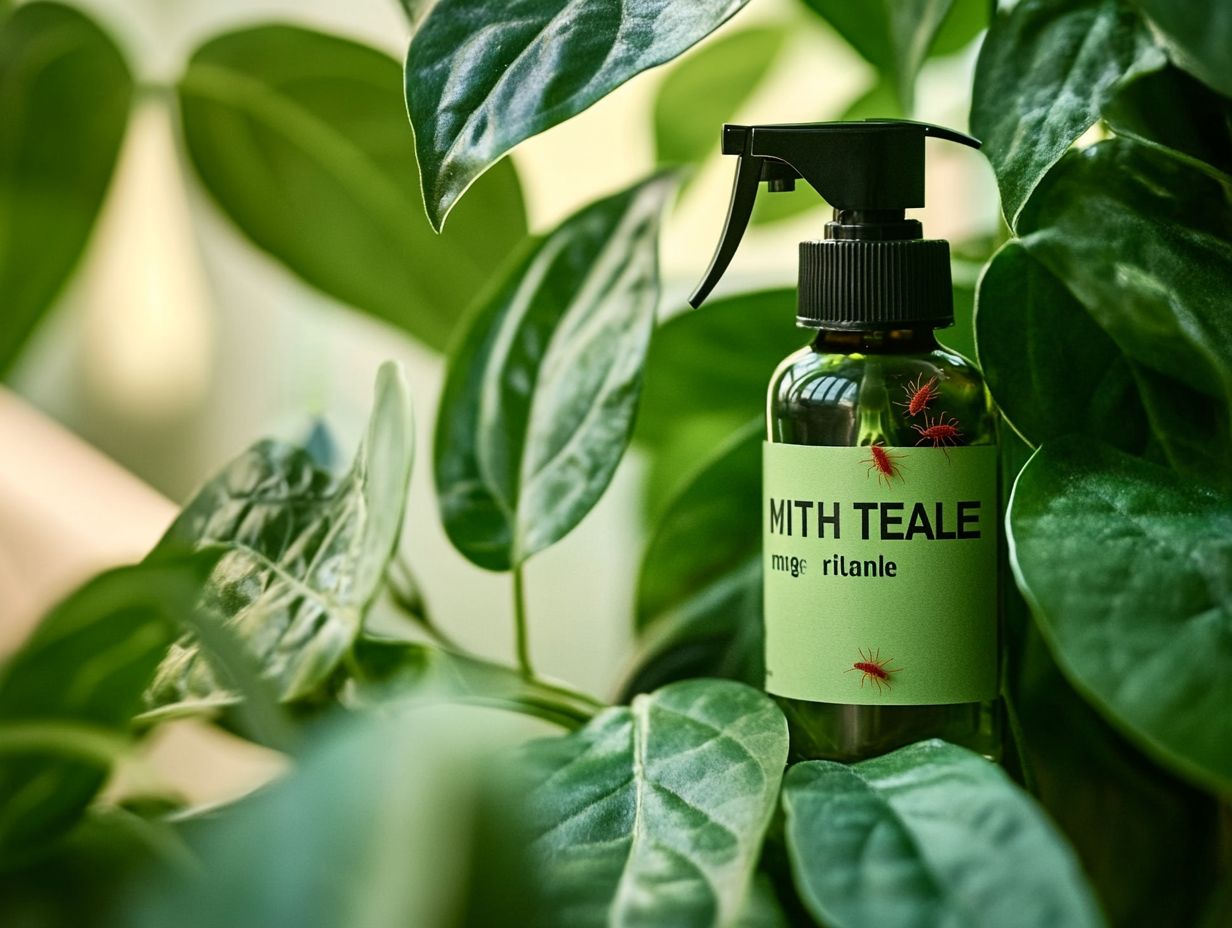
- Regularly inspect and clean houseplants to prevent spider mite infestations.
- Use natural remedies such as neem oil or insecticidal soap to eliminate spider mites.
- Keep plants healthy and stress-free to reduce their susceptibility to spider mite infestations.
Understanding Spider Mites
Understanding spider mites is essential for safeguarding the health of your houseplants. These tiny pests can wreak havoc if ignored.
Spider mites thrive in various environments, particularly in low humidity. It is vital for plant enthusiasts to routinely inspect their greenery for any signs of infestation.
This knowledge equips you to deploy effective pest control strategies using both natural remedies and insecticides to shield your plants. By familiarizing yourself with the behaviors and reproduction patterns of these mites, you can enhance the resilience and vitality of your indoor garden.
What are Spider Mites and How Do They Affect Houseplants?
Spider mites are elusive, microscopic pests that can cause significant damage to your houseplants. They manifest as unsightly leaf discoloration and yellow spots.
These tiny creatures, often no larger than 1/60 of an inch, come in shades of green, red, or yellow, making them a challenge to spot without a magnifying glass. Their feeding habits primarily target the undersides of leaves, where they pierce the cell walls to siphon off essential plant juices. This feeding frenzy can lead to stippling and curling of leaves, and even create fine webbing that obstructs vital processes like photosynthesis.
To ensure the health and vibrancy of your plants, stay alert for these signs of pest activity. Early detection is key; it can significantly mitigate damage and keep your houseplants thriving.
Identifying Spider Mite Infestations
Recognizing spider mite infestations early is crucial for effective pest management. These pests can quickly multiply and jeopardize the health of your plants.
You ll often notice signs of a mite invasion, such as tiny webs on the undersides of leaves, yellow spots on foliage, and, in severe cases, even leaf drop.
By conducting regular inspections of your plants and gently cleaning the leaves with a damp cloth, you can catch these pests before they escalate into a larger problem.
Signs and Symptoms to Look Out For
When monitoring your houseplants for spider mites, watch for these telltale signs:
- Yellow spots on leaves
- Fine webbing on the leaves
- Tiny specks that may indicate spider mite eggs, typically found on the undersides of leaves
Conduct a meticulous inspection by examining not only the leaves but also the branches and stems where these pests might hide. Check common hiding spots like the leaf axils and joints; spider mites thrive in these areas.
Regularly cleaning your plants and clearing away debris helps prevent infestations. This creates a healthier environment for your plants and makes it easier to spot any damage caused by these tiny invaders.
Don’t wait until it’s too late act now! Inspect your plants regularly and take the necessary steps to protect them from spider mites.
Preventing Spider Mite Infestations
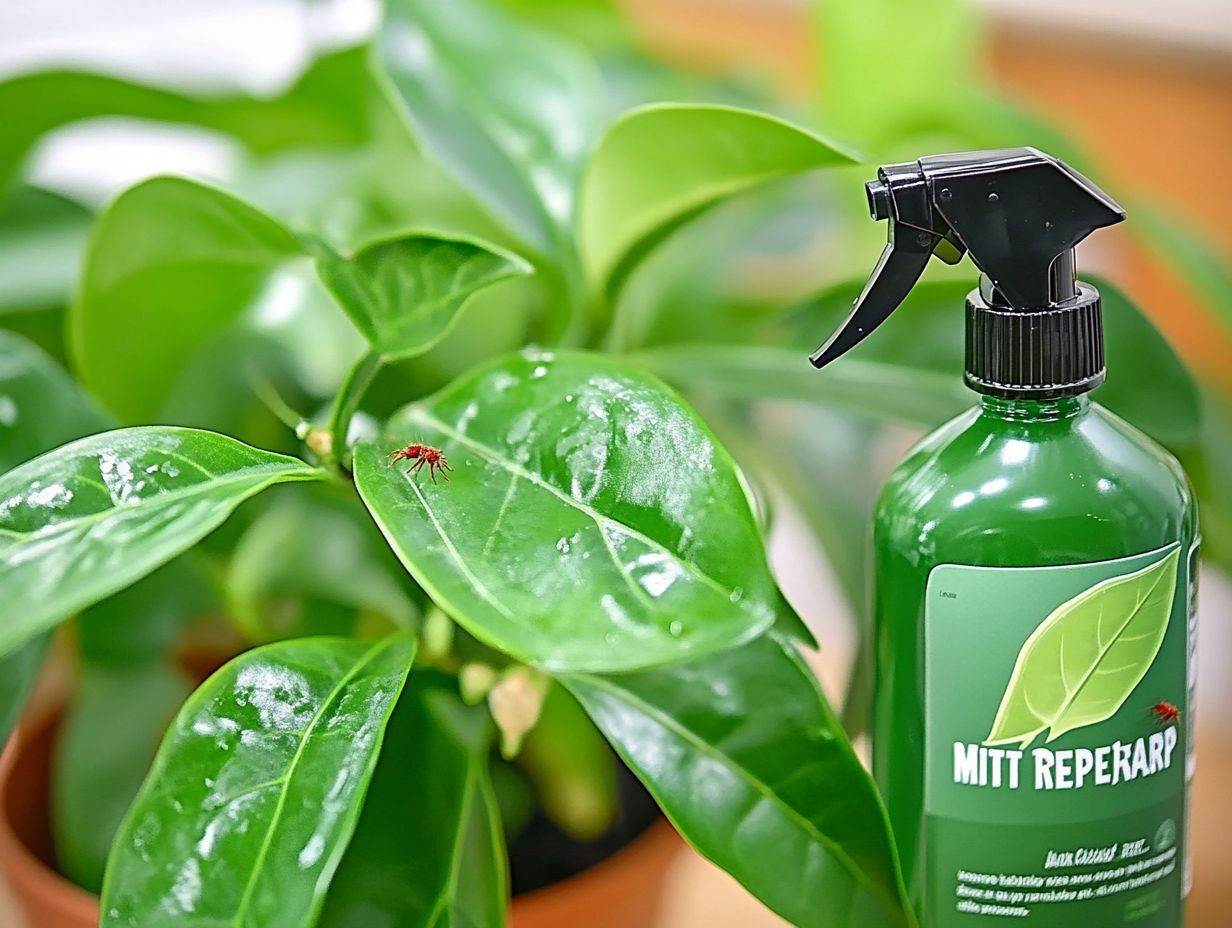
Preventing spider mite infestations is crucial for preserving the vitality of your houseplants. It all starts with grasping the environmental factors that encourage their growth. By maintaining optimal humidity levels around your plants and routinely inspecting for pests, you can significantly lower the risk of an infestation.
Quarantining new plants before welcoming them into your home is a wise strategy to thwart the spread of spider mites and other unwelcome pests.
Tips and Techniques for Keeping Spider Mites at Bay
To keep spider mites at bay, embrace a range of practical tips and techniques designed to enhance your plants’ resilience and overall health. These methods create an inhospitable environment for these pesky invaders and fortify the vitality of your plants.
For instance, increasing humidity is a simple yet effective tactic, as spider mites thrive in dry conditions. Additionally, if you notice aphids on your plants, learning how to remove aphids from indoor plants can be crucial. Clean the leaves regularly to stop infestations before they start by removing dirt and any lurking pests.
Employing water spraying techniques is another smart move; it helps physically dislodge any mites that might have taken up residence. By incorporating these pest prevention strategies into your routine plant care, including managing whiteflies on houseplants, you’ll ensure that your greenery remains vibrant and free from unwelcome visitors.
Treating Spider Mite Infestations
Effectively addressing spider mite infestations demands a combination of methods, using natural pesticides and DIY miticides to restore your plants to their prime. One of the go-to treatments is neem oil, a renowned natural remedy celebrated for its efficacy against spider mites.
Rubbing alcohol is another powerful ally, capable of eliminating these pesky invaders upon contact. By adopting an integrated pest control strategy, you not only tackle the current infestation but also bolster your plants defenses against future assaults.
Effective Methods for Eliminating Spider Mites
To effectively eliminate spider mites, consider employing a harmonious blend of treatments such as neem oil, soap solution, and rubbing alcohol methods that have proven effective in pest control.
Each treatment works differently and suits various plants. Neem oil disrupts the pests life cycle while creating a protective barrier when applied. For the soap solution, a gentle mix of liquid soap and water can suffocate the mites, so be sure to spray this concoction directly onto the affected leaves. Rubbing alcohol serves as a swift remedy for immediate infestations, allowing you to dab it on the troubled areas.
As you implement these treatments, it s vital to monitor your plants closely. Ensure they receive adequate light, moisture, and air circulation to bolster their overall health and resilience against future invasions.
Precautions and Safety Measures
Implementing the right precautions and safety measures during spider mite treatments is essential for safeguarding both yourself and your cherished plants. When using rubbing alcohol or insecticides, handle them carefully to avoid harm to yourself and your plants.
Follow label instructions meticulously and test any treatments on a small area before applying them more broadly. Ensure adequate ventilation during these procedures to minimize your exposure to any chemicals.
Protecting Yourself and Your Plants During Treatment
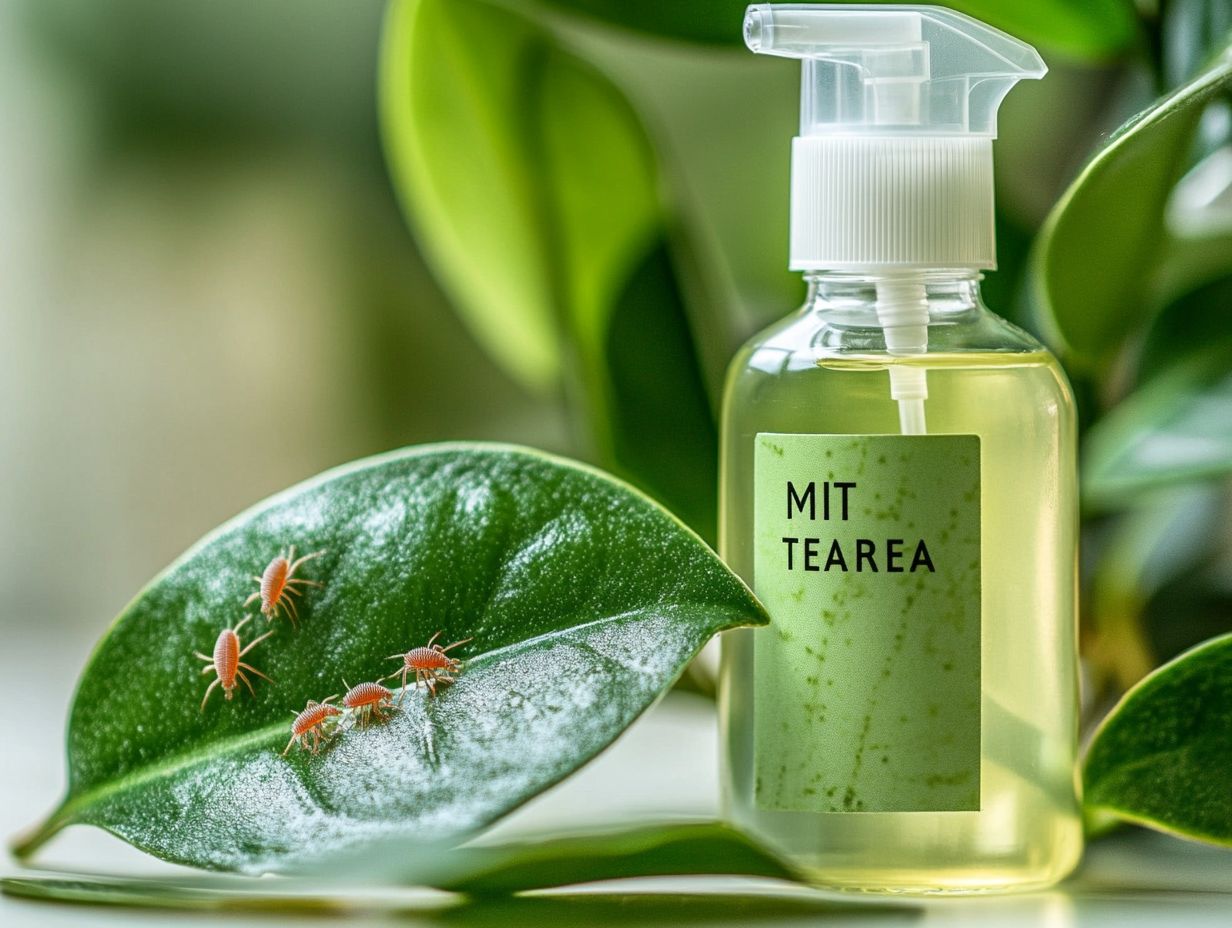
When addressing a spider mite infestation, prioritize the protection of both yourself and your plants by adhering to established treatment precautions. Start by donning gloves to safeguard your hands from potentially harmful chemicals or natural remedies.
Test any treatment on a less visible area of the plant first; this allows you to assess the plant’s reaction without risking significant damage. Ensure your plants are well-watered before application, as this can bolster their resilience against stress during treatment.
By focusing on both pest control and plant protection, you ll adopt a safer and more effective approach, ultimately leading to healthier plants and a flourishing garden.
Take these steps now to keep your plants thriving and pest-free!
Aftercare for Houseplants
After a spider mite infestation, caring for your houseplants is crucial. It helps restore their health and manage pests effectively.
Regularly inspect your plants after treatment. Make sure to check humidity levels and look for any pests.
A consistent plant care routine supports recovery and prevents future infestations.
Steps to Take After Treating Spider Mite Infestations
Following treatment, take these essential steps to help your plants thrive.
-
First, clean the leaves meticulously. This removes lingering pests and eggs that could hinder recovery.
-
Incorporate regular inspections into your routine. This helps you catch any potential issues early.
-
Monitor and adjust humidity levels. Spider mites love dry conditions, so increasing humidity makes it less inviting for them.
-
Enhance your care with natural pest management. Try solutions like DIY miticide or introduce beneficial insects like predatory mites.
Frequently Asked Questions
What are spider mites and why are they harmful to houseplants?
Spider mites are tiny pests that feed on plant sap. They can cause discoloration, stunted growth, and even death if untreated.
How can I identify if my houseplants have spider mites?
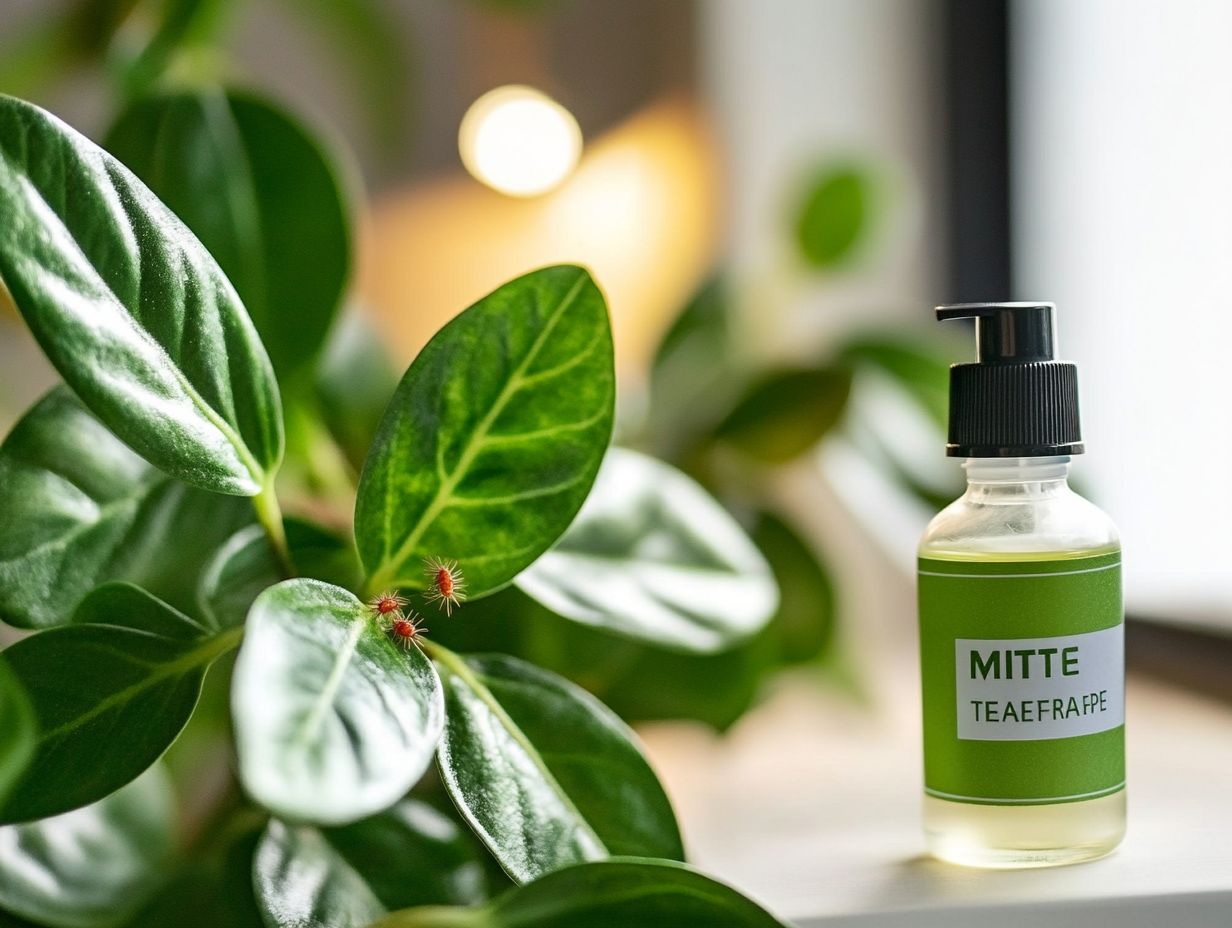
Look for tiny webs, speckled leaves, and yellow spots on your plants. You might also see the mites crawling on the leaves or soil.
What are some natural ways to combat spider mites?
One method is to spray a mixture of water and neem oil on the plant. Neem oil is a natural pest control derived from the seeds of the neem tree.
You can also release beneficial insects like ladybugs to help control the mites. Another option is to wipe down the leaves regularly with a mix of water and mild soap.
Should I isolate infested plants?
Yes, quarantine infested plants to stop the spread of spider mites. Clean the surrounding area to remove any eggs or larvae.
Can I prevent spider mites before they infest my plants?
Absolutely! Regular inspections and keeping your plants healthy can help prevent infestations. You can also spray plants with a mixture of water and dish soap as a preventive measure.
Are there chemical treatments for spider mites?
Yes, specific insecticides target spider mites. Use them with caution, and follow instructions to avoid harming your plants.

